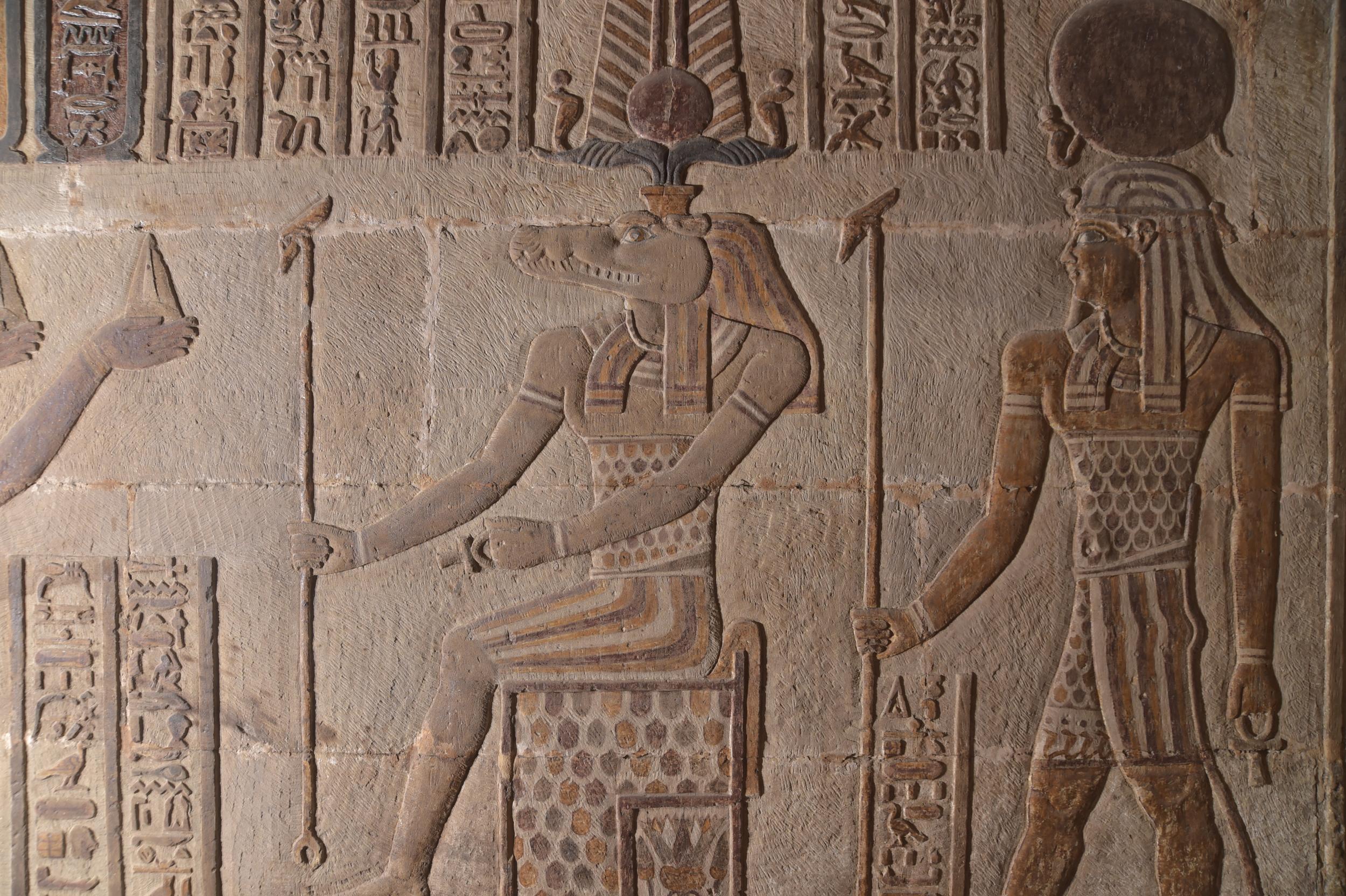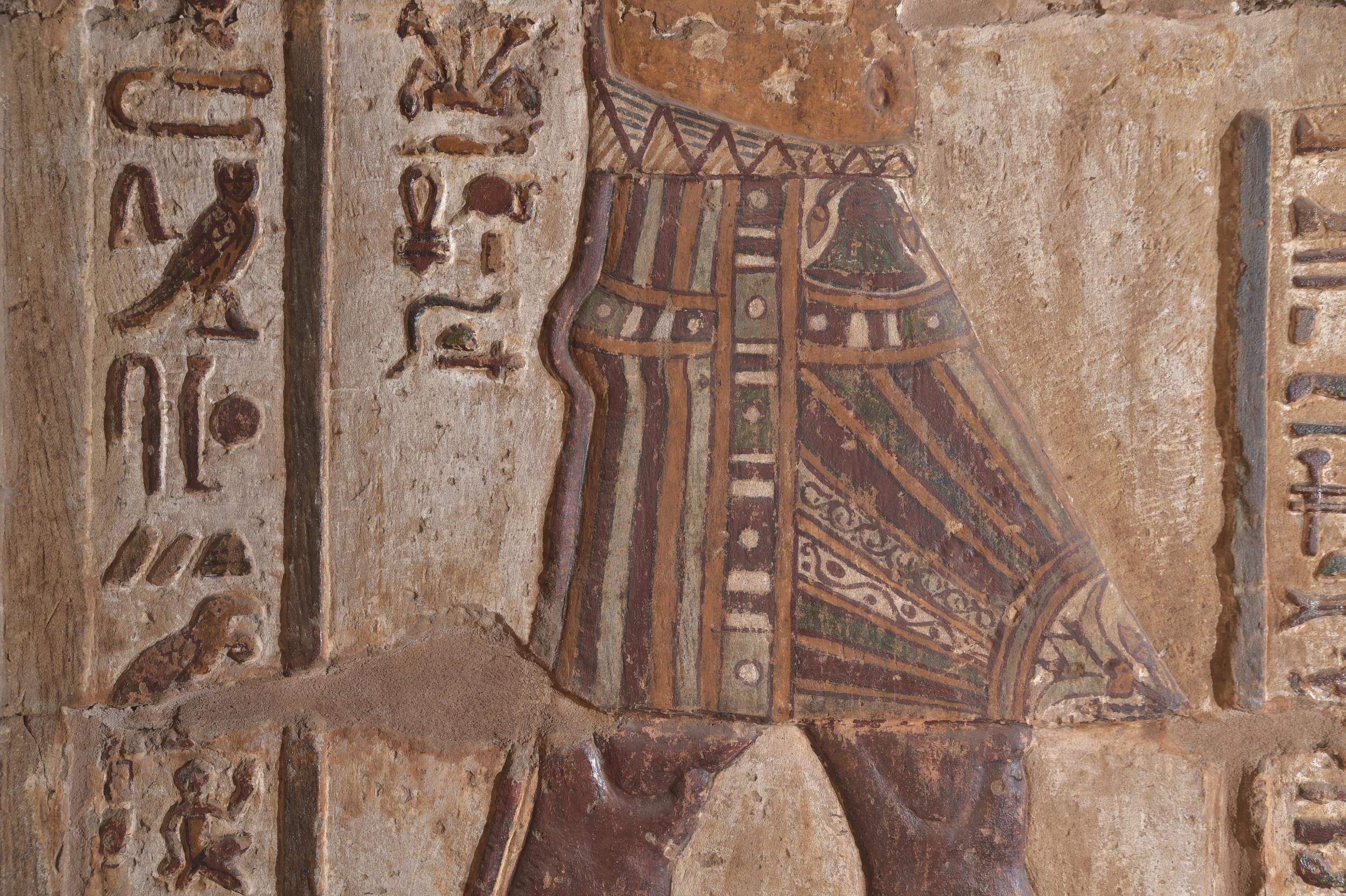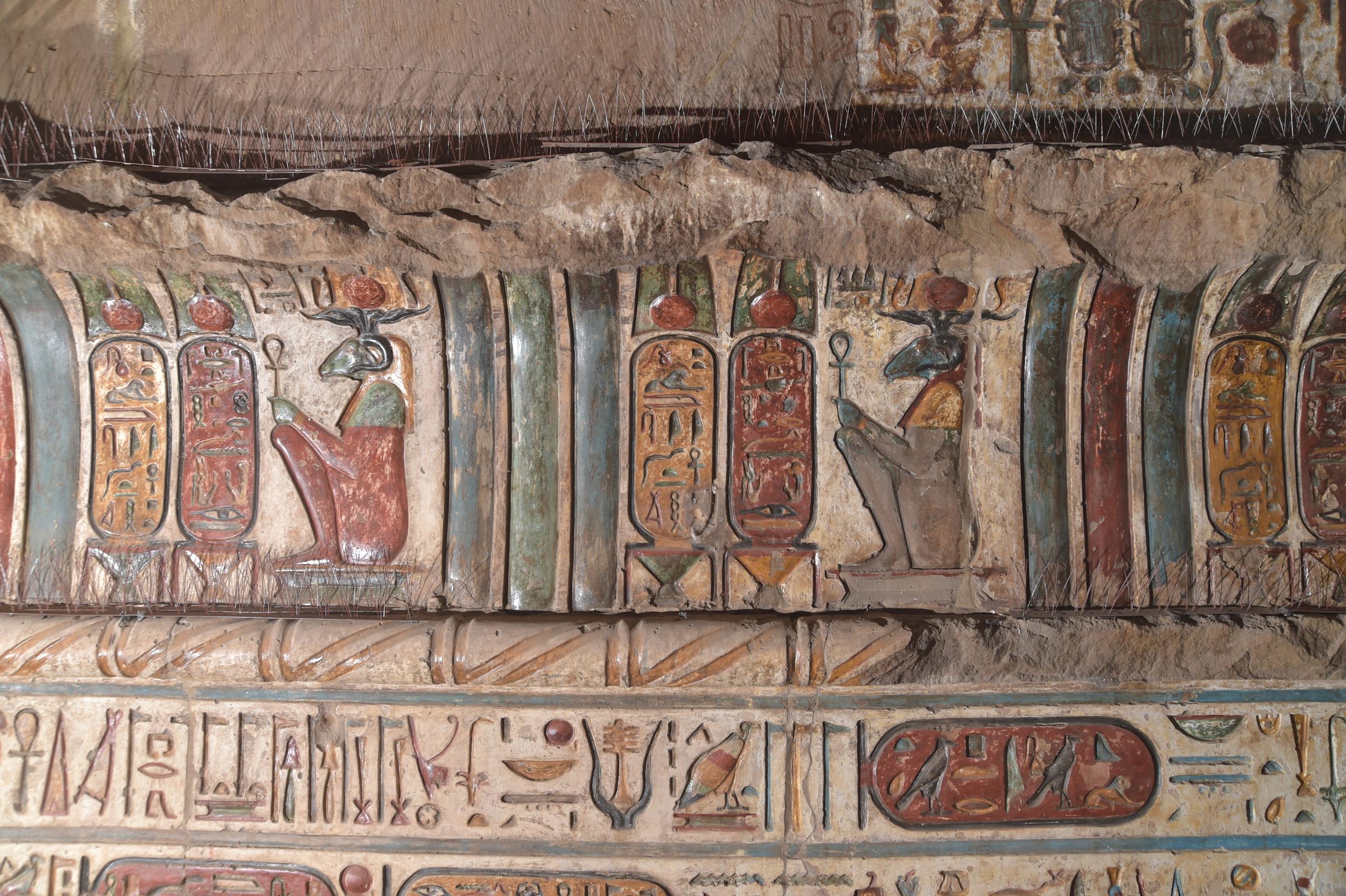New paintings and significant details uncovered in the Egyptian temple of Esna

The temple of Esna no longer exists, but its large vestibule was rediscovered more than 200 years ago, and is complete. Unfortunately, over the past 1800 years, locals lit fires in the building. As a result, the once-colourful wall and column decorations were blackened.
Thus, the pronaos is now undergoing extensive restoration work, in an Egyptian-German cooperation project. Over the past six years, a team of up to 30 Egyptian restorers revealed the colours of the astronomical images covering the entire ceiling as well as the colours of the 18 inner columns.
Yellow and red predominate
A new phase of restoration began this year. Specialists finished restoring the southern inner wall and the southern part of the western rear wall. They brought to light the original colours with dominant yellow and red pigments, marking a sharp difference from colour schemes found elsewhere - for example at the temple of Dendara, where white and light blue predominate.
The greatest discovery this year was the many painted details of the king's clothing and the deities of Esna, their crowns and their thrones. Previously, we could not see them at all due to the thick layer of soot over the reliefs”, says Egyptologist Professor Christian Leitz, from the Institute of Ancient Near Eastern Studies at the University of Tübingen.
All these painted details are an integral part of the offering scenes, which cover the inner walls of the temple. Researchers knew about the hieroglyphic texts and the reliefs; but the freshly uncovered decorations on the throne images have their own meaning.

In one scene – an offering of bow and arrow to the goddess Neith – the conservation team uncovered four painted bows in the lower part of the throne, perhaps part of originally nine bows - a reference to the “nine bows” as a designation for Upper and Lower Egypt and seven other territories ruled by the king of Egypt.
Another example is the apron of the king in one of the offering scenes. It is decorated with two plants: the papyrus (top) is the emblem of Lower Egypt and the lily (bottom) the emblem of Upper Egypt, symbolising that the king is the ruler of the two parts of the country.

Perhaps the most spectacular scene is the one with the holy barque of the local deity Khnoum, which carries the shrine of the god. This boat is carried by several priests who bring it out from the innermost part of the temple in a procession, so that on special occasions the people of Esna could at least see the closed shrine of the god. For the rest of the year, it was kept hidden in the temple, which was only accessible to the priests.

An ideal example of ancient Egyptian temple architecture
The pronaos of the temple in Esna is 37 metres long, 20 metres wide and 15 metres high. It is a sandstone structure which was erected in front of the actual temple building before or during the reign of the Roman Emperor Claudius (41–54 AD) and was probably much larger than the temple itself. Its location in the middle of the city centre probably contributed to the fact that the vestibule was preserved and was not used as a quarry for building materials, as other ancient edifices were during the industrialisation of Egypt. Even in Napoleon's time, the pronaos attracted attention among scholars, as it was considered an ideal example of ancient Egyptian temple architecture.

The main goal for the next few months is the cleaning of the outer part of the six front columns of the temple. This cannot be done in summer due to the great heat. To protect them from pigeons, the specialists installed modern spikes at the top of some of the facade pictures.
Latest Highlights:
NKUA and Google to collaborate in the field of Artificial Intelligence
The origin of most meteorites finally revealed by amU researchers
ULB students develop project to help ensure reliable power for remote Cambodian medical services
